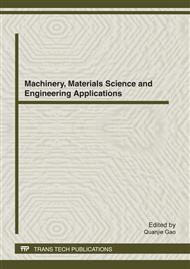p.585
p.590
p.594
p.599
p.603
p.609
p.614
p.619
p.623
Energy Management Strategy for a Fuel Cell E-REV Based on Minimum Power Loss Algorithm
Abstract:
Aim at the different characteristics from general fuel-cell vehicles of extended-range electric vehicles (E-REVs) with a fuel-cell stack as the Range Extender (RE), an energy management strategy based on minimum power loss algorithm is presented, which considers the efficiency of the fuel-cell stack and the charging and discharging efficiency of battery. The strategy is realized by neural network, simulated with the E-REV model, which is set up with ADVISOR. And a longer driving range is obtained.
Info:
Periodical:
Pages:
603-608
Citation:
Online since:
April 2012
Authors:
Price:
Сopyright:
© 2012 Trans Tech Publications Ltd. All Rights Reserved
Share:
Citation:


